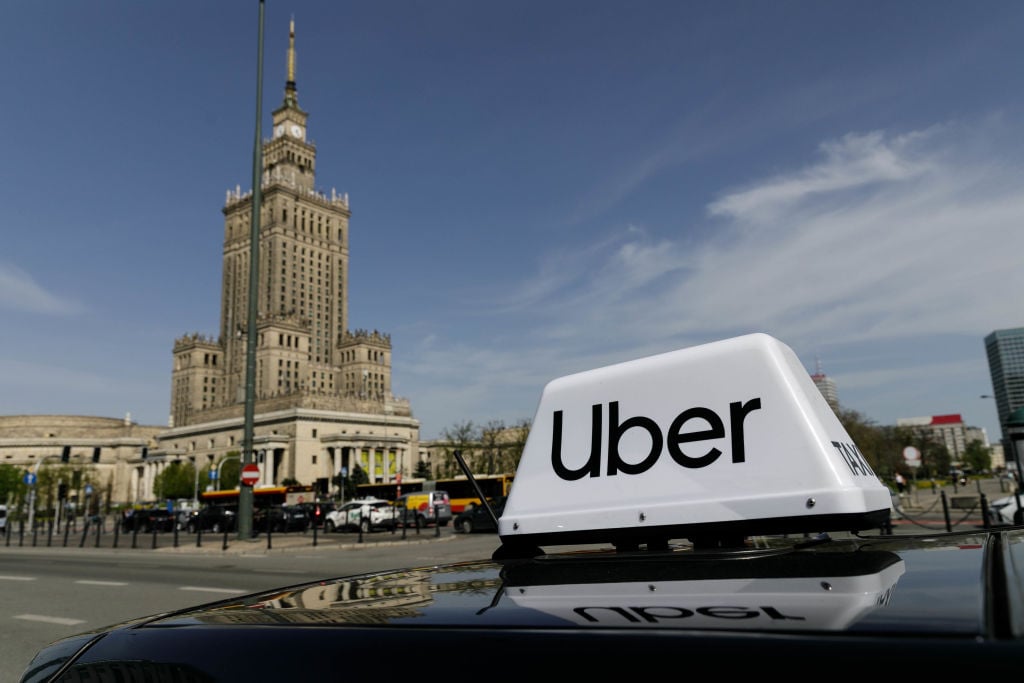Uber Technologies (UBER 2.56%) has come a long way from its early days as a cash-burning, ride-hailing start-up. Today, it's a global platform moving people, meals, and increasingly, goods. With improved profitability, expanding growth levers, and a clear push toward autonomy and advertising, Uber is no longer just a turnaround story.
That raises a bold question. Could Uber one day join the trillion-dollar club alongside Apple, Microsoft, and Nvidia? While the road there is long and filled with challenges, it's worth exploring how Uber might get there -- and what it would need to achieve along the way.

Image source: Getty Images.
Where Uber stands today
In 2024, the company generated $44 billion in revenue with gross bookings of $162.8 billion across its mobility, delivery, and freight businesses. Adjusted earnings before interest, taxes, depreciation, and amortization (EBITDA) hit $6.5 billion, and for the first time, Uber posted consistent generally accepted accounting principles (GAAP) profits in 2023 and 2024.
The business today is far more diversified than it was a decade ago. Ride-hailing remains its foundation, but delivery (Uber Eats) now generates nearly half of revenue, while newer bets in freight, advertising, and autonomy provide upside optionality. Importantly, the platform is benefiting from strong network effects: More users attract more drivers and merchants, which in turn drive more transactions and more data.
Uber has reached stability -- but to become a trillion-dollar company, it needs growth at a scale few companies ever achieve.

NYSE: UBER
Key Data Points
The market potential for Uber
Uber's addressable market is massive, estimated at trillions of dollars in the coming decade, spread across global mobility, delivery, and freight markets. Even if Uber only penetrates a fraction of that, the potential upside is staggering.
Consider mobility alone. The global taxi and ride-hailing industry is projected to reach $712 billion by 2033. Food delivery is forecast to exceed $2 trillion by 2030. Freight -- a far larger market -- is measured in the trillions. If Uber can maintain and grow market share in these areas, while layering in new revenue streams like advertising and autonomous vehicles, it has multiple avenues for expansion.
The other factor to consider is economics. Ride-hailing margins today are constrained by driver costs. But with autonomous vehicles in the mix, Uber could see its take rate and unit margins rise dramatically. Similarly, advertising (already at a $1.5 billion annual run rate in the first quarter of 2025) is a high-margin business that could scale quickly on top of existing transactions.
What a trillion-dollar Uber looks like
Here's the math investors need to consider. At a $1 trillion market cap, and assuming a price-to-earnings multiple of 20 to 25 (reasonable for a mature platform business), Uber would need $40 billion to $50 billion in annual net income.
That's quite a steep climb from today. Free cash flow and adjusted EBITDA in 2024 were $6.9 billion and $6.5 billion, respectively. In other words, Uber would need to grow profits by 7 times or more over the next decade to justify a trillion-dollar valuation.
That sounds daunting, but it's not impossible if Uber can unlock higher-margin businesses and expand scale across its ecosystem.
What does Uber need to do to get there?
To get to the trillion-dollar mark, Uber has several levers to pull:
- Autonomy: Labor accounts for over 70% of the cost of a ride. Even partial adoption of autonomous vehicles would expand mobility segment margins dramatically, especially since Uber doesn't need to own the cars -- it just runs the platform the cars operate on.
- Advertising could be a hidden profit engine: Ads are already at a billion-dollar run rate, but this is likely just the beginning.
- Delivery beyond restaurants: Food delivery may be maturing, but grocery, retail, and convenience delivery expand Uber's logistics reach -- turning it from a takeout app into a broader commerce infrastructure play.
- Operational discipline: Uber's recent profitability proves it can prioritize sustainable growth. Continuing this discipline will be crucial as it scales.
If Uber executes on a few of these levers, its profit profile could look very different in the next decade.
The bottom line for investors
So, does Uber have a realistic shot at becoming a trillion-dollar company? The short answer: Yes, but with caveats. To get there, Uber needs to grow profits significantly, which will require a combination of autonomy, advertising, delivery expansion, and disciplined execution. It's not guaranteed, but the pathways are visible.
In other words, for that vision to play out, Uber must become one of the most powerful transport infrastructure companies of the coming years. Investors who have conviction that Uber can achieve that can consider holding the stock for the long term, more than five years.





